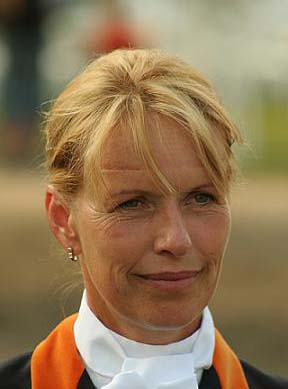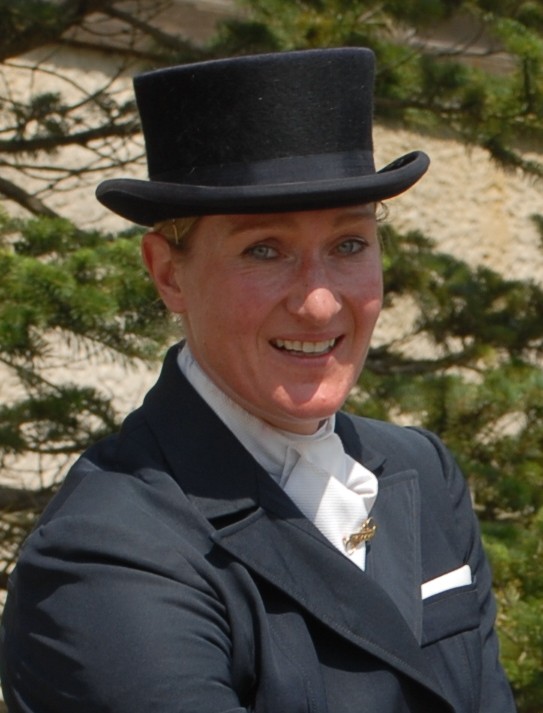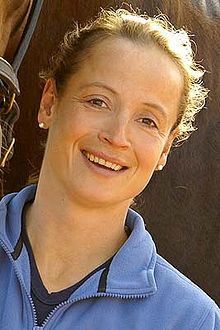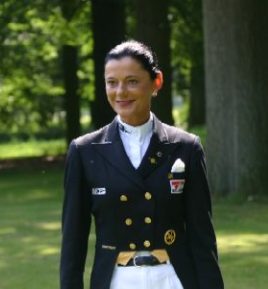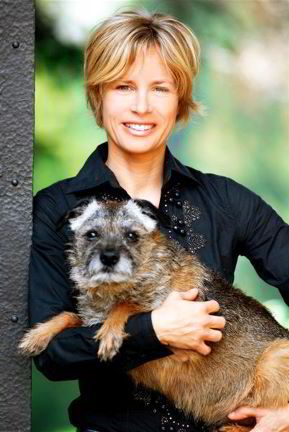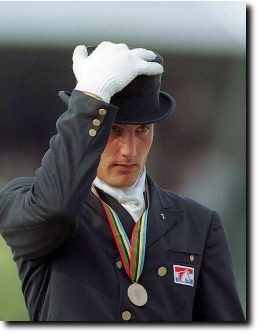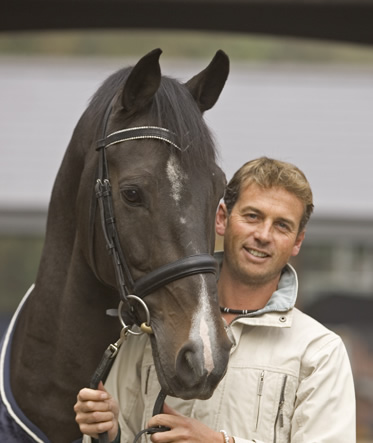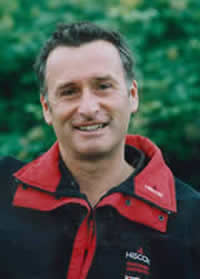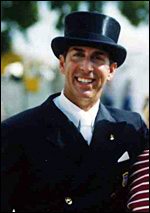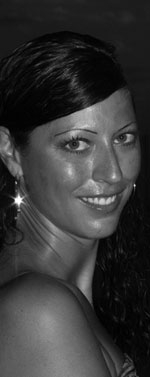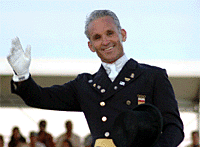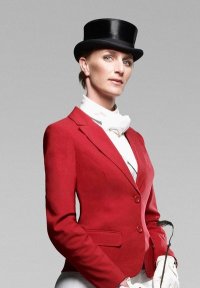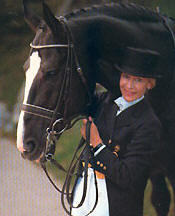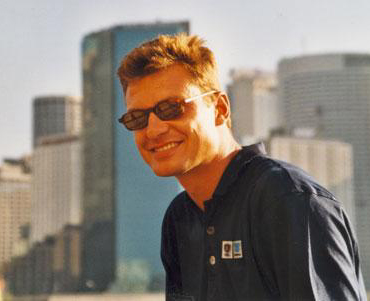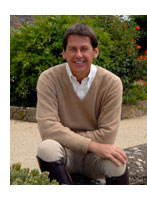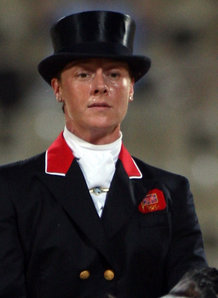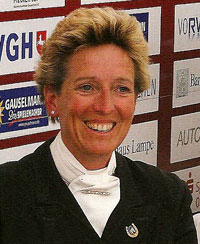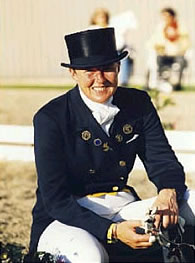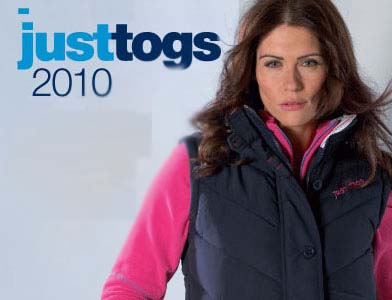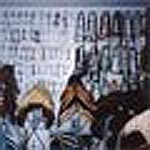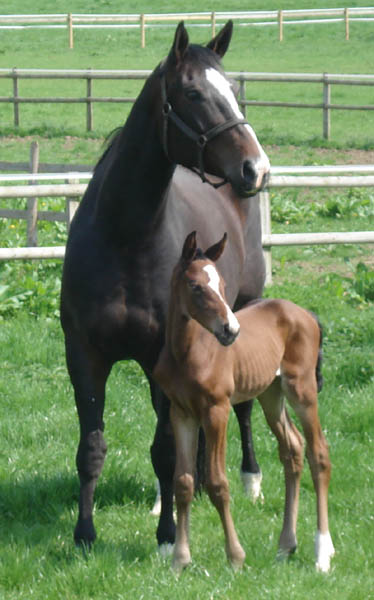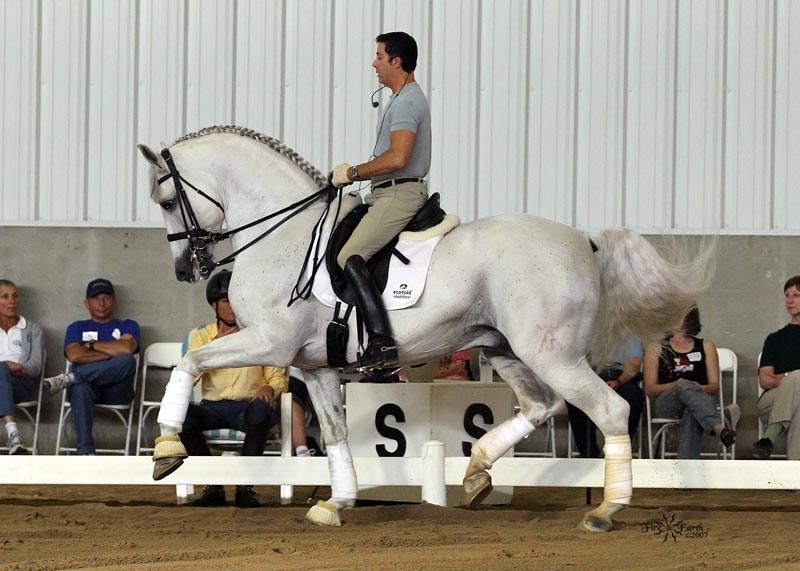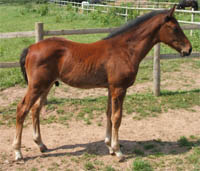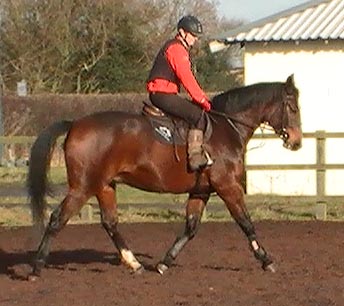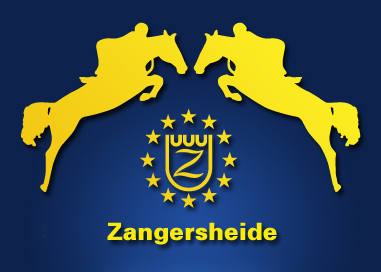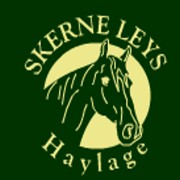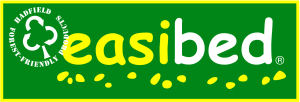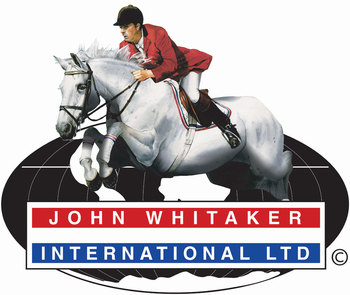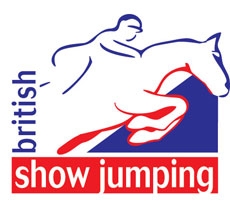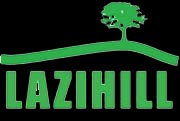Show Jumpers For Sale
Equestrian News - Dressage
| ODT Kings Jasper, Competed by Mathew Wright Dressage Horse ODT Kings Jasper |
| Exquis Nadine - Dressage Dressage horse competed by Hans Peter Minderhoud |
| Arabian Horses and Dressage Swift and tireless; beautiful yet tough and strong; intelligent, fiery and courageous, yet docile, gentle and loving - the Arabian attracts many dressage enthusiasts with its elegance a |
| Arab Games 2011 The host nation took double-gold in Dressage as well as the Individual Jumping title while the United Arab Emirates proved unbeatable in Endurance and Saudi Arabia scooped the team Jump |
| Deauville wins for Daniel Sherriff and Zoe Sleigh Deauville proved a happy hunting ground for British riders last weekend in France, none more so than Daniel Sherriff who claimed his hat-trick of French Freestyle wins with his own Bayf |
| World class British entry for Hickstead CDIO/CDI/P/J/Y Britain has put a substantial definite entry forward for this year’s international Hickstead fixture, 1 – 4 August, which features the final leg of the inaugural FEI Nations Cup Dressag |
| Dutch Dressage Team for European Championship beginning to emerge is After the second round of the Dutch championship seniors the riders picked to represent the Netherlands at the European Dressage Championships in Herning is becoming clearer. The Dutch |
| Senior team Charlotte Dujardin , Michael Eilberg, Carl Hester , Laura Tomlinson and Gareth Hughes named for 2013 European Championships British Dressage has today announced their selection for the upcoming ecco FEI Dressage European Championships* in Herning, Denmark (21-25 August), which includes all three combinations |
| Valegro and Charlotte Dujardin back on top Dressage World ranking The British rider Charlotte Dujardin and her eleven year old Negro son Valegro are ranked in first place in the world. The Olympic champions, recently won the Grand Prix and the Freesty |
| Danish Anders Dahl dominates big tour at Premier League Danish rider Anders Dahl dominated at big tour level over four days competition during Hickstead Premier League, 19 – 22 June. Riding his fiancé Fiona Bigwood’s Hanoverian gelding Wie A |
| Dressage - FEI Nations Cup action in Rotterdam Britain’s team of four riders have travelled to Rotterdam for the second leg of the inaugural FEI Nations Cup™ Dressage series. The team combinations representing Great Britain in the C |
| Sue Carson crosses the channel for first international Derbyshire based list 1 judge and group 1.2 rider Sue Carson has crossed the channel to compete in the big tour classes at Biarritz CDI2*, France, 14 -16 June. She will ride her |
| Dressage: British Pony Team for the 2013 Euros The British Dressage Pony Selectors have pleasure in announcing the Great Britain Pony Team for the European Championships in Arezzo, Italy on 23-28 July. The selected combinations (in |
| Adelinde Cornelissen to host 2013 British Dressage Convention The British Dressage Convention supported by the National Saddle Centre British Dressage is delighted to announce that Dutch European Dressage Champion and 2012 Olympian, Adelind |
| Arnhem CDI3*: Michael Eilberg earns second place in PSG British rider Michael Eilberg and Woodlander Rockstar were well-placed at small tour at Arnhem CDI3*, the Netherlands (30 May – 2 Jun 2013). Michael (pictured) rode Lynne Crowden |
| Rotterdam Dressage Nations Cup team to be Charlotte Dujardin, Gareth Hughes, Carl Hester and Daniel Watson The British Dressage selectors have today announced the team of four that will be contesting the CDIO5* Nations Cup competition in Rotterdam, The Netherlands (19-23 June 2013). T |
| Dressage Olympians to Perform in London As if the news that the Longines Global Champions Tour showjmping is coming to London next week wasn’t enough, the organisers have now announced Saturday evening’s performance on 08 Jun |
| Wiesbaden wash out For senior international rider Nikki Crisp and her 16 year old Dutch mare Pasoa, 2013 hasn’t got off to an incredibly good start. The reason? Something entirely out of both horse |
| Sarah Millis and Furst Rubin win in Vidauban CDIO*** Sarah Millis and Furst Rubin (Furst Piccolo x Rubinstein) captured their first international victory at Vidauban CDIO3*, in Southern France, 17 – 19 May 2013. Sarah and ‘Rubin’ ( |
| Steffen Peters and Scott Hassler Returning to Succeed/USDF FEI-Level Trainers’ Conference The United States Dressage Federation announced today that Olympian Steffen Peters and USEF National Young Dressage Horse Coach Scott Hassler will return to headline the 2014 Succeed/US |
|
Equestrian Clothing - Equine Casual Wear - Riding Safety Wear - Horse Riding Clothes - Equestrian Footwear Tack - Saddles - Bridles - Horse Boots - Bits - Saddle Pads - Excercise Boots - Girths Accessories - Head Colors - Horse Grooming - Travel Boots - Rugs - Lead Ropes - Bandages Feed & Supplements - Horse Feed - Feed Suppliments - Hailage Gifts - Furniture - Pictures - Orniments - Video's & DvD's - Posters & Calenders - Toys |
Dressage
Dressage (a French term, most commonly translated to mean "training") is a path and destination of competitive horse training, with competitions held at all levels from amateur to the Olympics. Its fundamental purpose is to develop, through standardized progressive training methods, a horse's natural athletic ability and willingness to perform, thereby maximizing its potential as a riding horse. At the peak of a dressage horse's gymnastic development, it can smoothly respond to a skilled rider's minimal aids by performing the requested movement while remaining relaxed and appearing effortless. Dressage is occasionally referred to as "Horse Ballet" . Although the discipline has ancient roots, dressage was first recognized as an important equestrian pursuit in the West during the Renaissance. The great European riding masters of that period developed a sequential training system that has changed little since then. Classical dressage is still considered the basis of trained modern dressage.
Early European aristocrats displayed their horses' training in equestrian pageants, but in modern dressage competition, successful training at the various levels is demonstrated through the performance of "tests" of prescribed series of movements within a standard arena. Judges evaluate each movement on the basis of an objective standard appropriate to the level of the test and assign each movement a score from zero to ten - zero being "not executed" and 10 being "excellent". A score of 9 is considered "very good" and is considered a particularly high mark, while a competitor achieving all 6s (or 60% overall) should be considering moving on to the next level.
All riding horses can benefit from use of dressage principles and training techniques. However, horse breeds most often seen at the Olympics and other international FEI competitions are in the warmblood horse breeds category. Dressage is an egalitarian competition in which all breeds are given an opportunity to compete successfully. Therefore, many other breeds are seen at various levels of competition.
In non-competitive performances of classical dressage that involve the "Airs above the ground", the "Baroque" breeds of horses, most notably the Lipizzaner, are seen most often.
There are two sizes of arenas: small and standard. Each has letters assigned to positions around the arena for dressage tests to specify where movements are to be performed.
The small arena is 20 m by 40 m (66x131 ft), and is used for the lower levels of three-day eventing in the dressage phase, as well as for the USDF Introductory tests and the USEF Training Level tests. Its letters around the outside edge, starting from the point of entry and moving clockwise, are A-K-E-H-C-M-B-F. Letters also mark locations in the middle of the arena: Moving down the center line, they are D-X-G, with X in the center. Since the combination of Equine Canada (EC) and United States Dressage Federation (USDF) tests in 2003, the small size arena is no longer utilized in rated shows in North America.
Standard dressage arena, 20 m by 60 m (66x197 ft).
The standard arena is 20 m by 60 m (66x197 ft), and is used for tests in both dressage (USEF First Level and above) and eventing. The standard dressage arena letters are A-K-V-E-S-H-C-M-R-B-P-F. (There is speculation as to why these letters were chosen. Most commonly it is believed because the German cavalry had a 20 x 60 meter area in between the barracks which had the letters posted above the doors) The letters on the long sides of the arena, nearest the corners, are 6 m (19.7 ft) in from the corners, and are 12 m (39.4 ft) apart from each other. The letters in the middle of the arena are D-L-X-I-G, with X marking the center.
At the start of the test, the horse enters at A. There is always a judge sitting at C, although for upper-level competition, there are up to five judges at different places around the arena—at C, E, B, M, and H—which allows the horse to be seen in each movement from all angles. This helps prevent certain faults from going unnoticed, which may be difficult for a judge to see from only one area of the arena. For example, the horse's straightness going across the diagonal may be assessed by judges at M and H. Judges in the United States are licensed by the USEF for different levels of competition, depending on the judge's experience and training.
The dressage arena also has a centerline (from A to C, going through X in the middle), as well as two quarter-lines (halfway between the centerline and long sides of each arena).
Dressage competitions may begin in local communities with Introductory level classes where riders need only walk and trot. Horses and riders advance through a graduated series of levels, with tests of increasing difficulty at each level, until the most accomplished horse and rider teams compete at the Grand Prix levels and international competition, such as the Olympic games.
Dressage consists of the lower levels: First, Second, Third and Fourth. Introductory and Training levels prelude First level in the United States. In Australia the levels are as follows Prep, Preliminary, Novice, Elementary, Medium and Advanced. The FEI (Federation Equestre Internationale) levels: Prix St. Georges, Intermediare I, Intermediare II and Grand Prix.
Apart from competition, there is a tradition of classical dressage, in which the tradition of dressage is pursued as an art form. The traditions of the masters who originated Dressage are kept alive by the Spanish Riding School in Vienna, Austria and the Cadre Noir in Saumur, France. This type of schooling is also a part of Portuguese and Spanish bullfighting exhibitions.
Dressage tests are the formalized sequence of a number of dressage movements used in competition. Although horses and riders are competing against each other, tests are completed by one horse and rider combination at a time, and horses and riders are judged against a common standard, rather than having their performance scored relative to the other competitors.
At the upper levels, tests for International competitions, including the Olympics, are issued under the auspices of the Federation Internationale Equestre. At the lower levels, and as part of dressage training each country authorizes its own set of tests. In the USA it is the The United States Equestrian Federation and the United States Dressage Federation. Pony Clubs also produce basic walk/trot tests. The British Dressage Federation has similar rules.
Each test is segmented into a number of sequential blocks which may contain one or more movements. Each block is generally scored between one and ten on the following scale:
In addition to marks for the dressage movements, marks are also awarded for more general attributes such as the horse's gaits, submission, impulsion and the rider’s performance. Some segments are given increased weight by the use of a multiplier, or coefficient. Coefficients are typically given a value of 2, which then doubles the marks given for that segment.[1] Movements that are given a coefficient are generally considered to be particularly important to the horse's progression in training, and should be competently executed prior to moving up to the next level of competition. The scores for the general attributes of gait, submission, impulsion, and rider performance mentioned above are scored using a coefficient.
The dressage training scale is arranged in a pyramid fashion, with “rhythm and regularity” at the bottom of the pyramid and “collection” at the top. The training scale is used as a guide for the training of the dressage horse (or any horse, for that matter). Despite its appearance, the training scale is not meant to be a rigid format. Instead, each level is built on as the horse progresses in training: so a Grand Prix horse would work on the refinement of the bottom levels of the pyramid, instead of focusing on only the highest level: “collection.” The levels are also interconnected. For example, a crooked horse is unable to develop impulsion, and a horse that is not relaxed will be less likely to travel with a rhythmic gait. However, this training scale as presented below is a translation from the German to the English. As such, it is possibly not as accurate as it could be. It has been suggested, for example, that Losgelassenheit might be more accurately translated as "Suppleness."
Rhythm, gait, tempo, and regularity should be the same on straight and bending lines, through lateral work, and through transitions. Rhythm refers to the sequence of the footfalls, which should only include the pure walk, pure trot, and pure canter. The regularity, or purity, of the gait includes the evenness and levelness of the stride. Once a rider can obtain pure gaits, or can avoid irregularity, the combination may be fit to do a more difficult exercise. Even in the very difficult piaffe there is still regularity: the horse "trots on the spot" in place, raising the front and hind legs in rhythm.
The second level of the pyramid is relaxation (looseness). Signs of looseness in the horse may be seen by an even stride that is swinging through the back and causing the tail to swing like a pendulum, looseness at the poll, a soft chewing of the bit, and a relaxed blowing through the nose. The horse makes smooth transitions, is easy to position from side to side, and willingly reaches down into the contact as the reins are lengthened.
Contact—the third level of the pyramid—is the result of the horse’s pushing power, and should never be achieved by the pulling of the rider’s hands. The rider encourages the horse to stretch into soft hands that allow the horse to lift the base of the neck, coming up into the bridle, and should always follow the natural motion of the animal’s head. The horse should have equal contact in both reins.
The pushing power (thrust) of the horse is called "impulsion," and is the fourth level of the training pyramid. Impulsion is created by storing the energy of engagement (the forward reaching of the hind legs under the body).
Proper impulsion is achieved by means of:
Correct driving aids of the rider
Relaxation of the horse
Throughness (Durchlässigkeit): the flow of energy through the horse from front to back and back to front. The musculature of the horse is connected, supple, elastic, and unblocked, and the rider’s aids go freely through the horse.
Impulsion can occur at the walk, trot and canter. It is highly important to establish good, forward movement and impulsion at the walk, as achieving desirable form in the trot and canter relies heavily on the transition from a good, supple, forward walk.
Impulsion not only encourages correct muscle and joint use, but also engages the mind of the horse, focusing it on the rider and, particularly at the walk and trot, allowing for relaxation and dissipation of nervous energy.
A horse is straight when the hind legs follow the path of the front legs, on both straight lines and on bending lines, and the body follows the line of travel. Straightness allows the horse to channel its impulsion directly toward its center of balance, and allows the rider’s hand aids to have a connection to the hind end.
At the apex of the training scale stands collection. It may refer to collected gaits: they can be used occasionally to supplement less vigorous work. It involves difficult movements (such as flying changes) in more advanced horses. Collection requires greater muscular strength, so must be advanced upon slowly. When in a collected gait, the stride length should shorten, and the stride should increase in energy and activity.
When a horse collects, more weight moves to the hindquarters. Collection is natural for horses and is often seen during play in the meadow. A collected horse is able to move more freely. The joints of the hind limbs have greater flexion, allowing the horse to lower the hindquarters, bringing the hind legs further under the body, and lighten and lift the forehand. In essence, collection is the horse's ability to move its centre of gravity to the rear.
All dressage competitors in the USA are urged to consult the current rules for tack, equipment, etc provided at www.USEF.org The rules on permitted cavessons (nosebands) saddles, saddle pads, etc are subject to change and do change as more and more styles and stylish equipments are introduced into the marketplace. Dressage horses are shown in minimal tack. They are not permitted to wear boots (including hoof or bell boots) or wraps (including tail bandages) during the test, nor are they allowed to wear martingales or training devices such as draw or running reins or the gogue anywhere on the showgrounds during the competition. Due to the formality of dressage, tack is usually black leather, although dark brown is seen from time to time.
An English-style saddle is required for riding dressage, specifically a "dressage saddle" which is modeled exclusively for the discipline. It is designed with a long and straight saddle flap, mirroring the leg of the dressage rider, which is long with a slight bend in the knee, a deep seat and usually a pronounced knee block. The saddle is usually placed over a square, white saddle pad. Colored trim on the saddle pad is permitted. A dressage saddle is required in FEI classes, although any simple English-type saddle may be used at the lower levels.
At the lower levels of dressage, a bridle includes a plain cavesson, drop noseband, or flash noseband. Currently, drop nosebands are relatively uncommon, with the flash more common. At the upper levels a plain cavesson is used on a double bridle. Figure-eight(also called Grackle) nosebands are not allowed in pure dressage, however they are allowed in the dressage phase of eventing[6]. Riders are not allowed to use Kineton nosebands, due to their severity. Beads and colored trim are permitted along the brow band of the bridle.
The dressage horse at lower levels is only permitted to be shown at recognized competitions in a snaffle bit, though the detail regarding bitting varies slightly from organization to organization. The loose-ring snaffle with a single- or double-joint is most commonly seen. Harsher snaffle bits, such as twisted wire, corkscrews, slow-twists, and waterfords are not permitted, nor are pelhams, kimberwickes, or gag bits. Upper level and FEI dressage horses are shown in a double bridle, using both a bradoon and a curb bit with a smooth curb chain.
Dressage horses are turned out to a very high standard, as competitive dressage is descended from royal presentations in Europe. It is traditional for horses to have their mane braided. In eventing, the mane is always braided on the right. In competitive dressage, however, it is occasionally braided on the left, should it naturally fall there. Braids vary in size depending on the conformation of the horse, but Europeans tend to put in fewer, larger braids, while horses in the United States usually have more braids per horse (possibly from the influence of hunter-style riding in the country). Braids are occasionally accented in white tape, which also helps them stay in throughout the day. The forelock may be left unbraided; this style is most commonly seen on stallions.
Horses are not permitted to have bangles, ribbons, or other decorations in their mane or tail. Tail extensions are permitted in the United States and Australia.
The tail is usually not braided (although it is permitted), because it may cause the horse to carry the tail stiffly. Because the tail is an extension of the animal's spine, a supple tail is desirable as it shows that the horse is supple through its back. The tail should be "banged," or cut straight across (usually above the fetlocks but below the hocks when held at the point where the horse naturally carries it). The dock is pulled or trimmed to shape it and give the horse a cleaner appearance.
The bridle path is clipped or pulled, usually only 1-2 inches. The animal's coat may or may not be trimmed. American stables almost always trim the muzzle, face, ears, and legs, while European stables do not have such a strict tradition, and may leave different parts untrimmed.
Hoof polish is usually applied before the horse enters the arena. The horse is impeccably clean, with a bathed coat and sparkling white markings. The horse's saliva often forms "foam" about the horse's lips, and is generally considered to be a sign of the horse's submission and acceptance of the bit. Some riders believe that foam should not be cleaned off the horse's mouth before entering the arena due to its status as a sign of submission. Conversely, some riders choose the wipe the foam from their horse's mouth prior to entering the arena, as it can drip from the horses mouth and land on the horse's chest and legs. It should be noted that the presence of foam does not necessarily indicate the horse's acceptance of the bit, as certain metals such as German silver may cause the horse's salivation to increase without full acceptance of the bit.
Quarter marks are sometimes seen, especially in the dressage phase of eventing, however they are not currently in style for competitive dressage.
Dressage riders, like their horses, are dressed for formality. In competition, they wear white breeches, often full-seat leather to help them "stick" in the saddle, with a belt, and a white shirt and stock tie with a small pin. Gloves are usually white, although less-experienced riders or those at the lower levels often opt for black, as white gloves tend to accentuate the movement of a less-experienced rider's unsteady hands. The coat worn is usually solid black with metal buttons, although solid navy is also seen. Dressage coats differ from traditional hunt coats in that dressage coats have four buttons, while hunt coats have three. In upper-level classes, the riders wear a shadbelly with a yellow vest or vest points instead of a plain dressage coat.
Riders usually wear tall dress boots, although field boots may be worn by riders at the lower levels. Spurs are required at the upper levels, and riders must maintain a steady lower leg for proper use. A whip may be carried in any competition except in a CDI or a national championship, and the length is regulated. Whips are not permitted in eventing dressage.
If the dressage rider has long hair, it is typically worn in a bun with a hair net or show bow. A hair net blends in with the rider's hair color, whereas a show bow combines a barrette or hair tie with a small bow and thick hair net, and is usually black. Lower-level riders may use a derby, hunting cap, or ASTM/SEI-approved Equestrian helmet. In the United States, junior riders at recognized competitions are required to wear an ASTM/SEI approved helmet to protect against head trauma in the event of a fall. At the upper levels, a top hat that matches the rider's coat is traditionally worn, though in some competitions, an ASTM/SEI approved helmet is show legal.
Equestrian Directory
If your are looking for an equestrian business search our online equine directory with 1000's of businesses from around the world we can help you find equine businesses & services what ever your needs.
If you are own or run an equestrian business you can add your company into the equine directory FREE. Stable Express is a leading equestrian website getting thousands of unique visitors each month.

